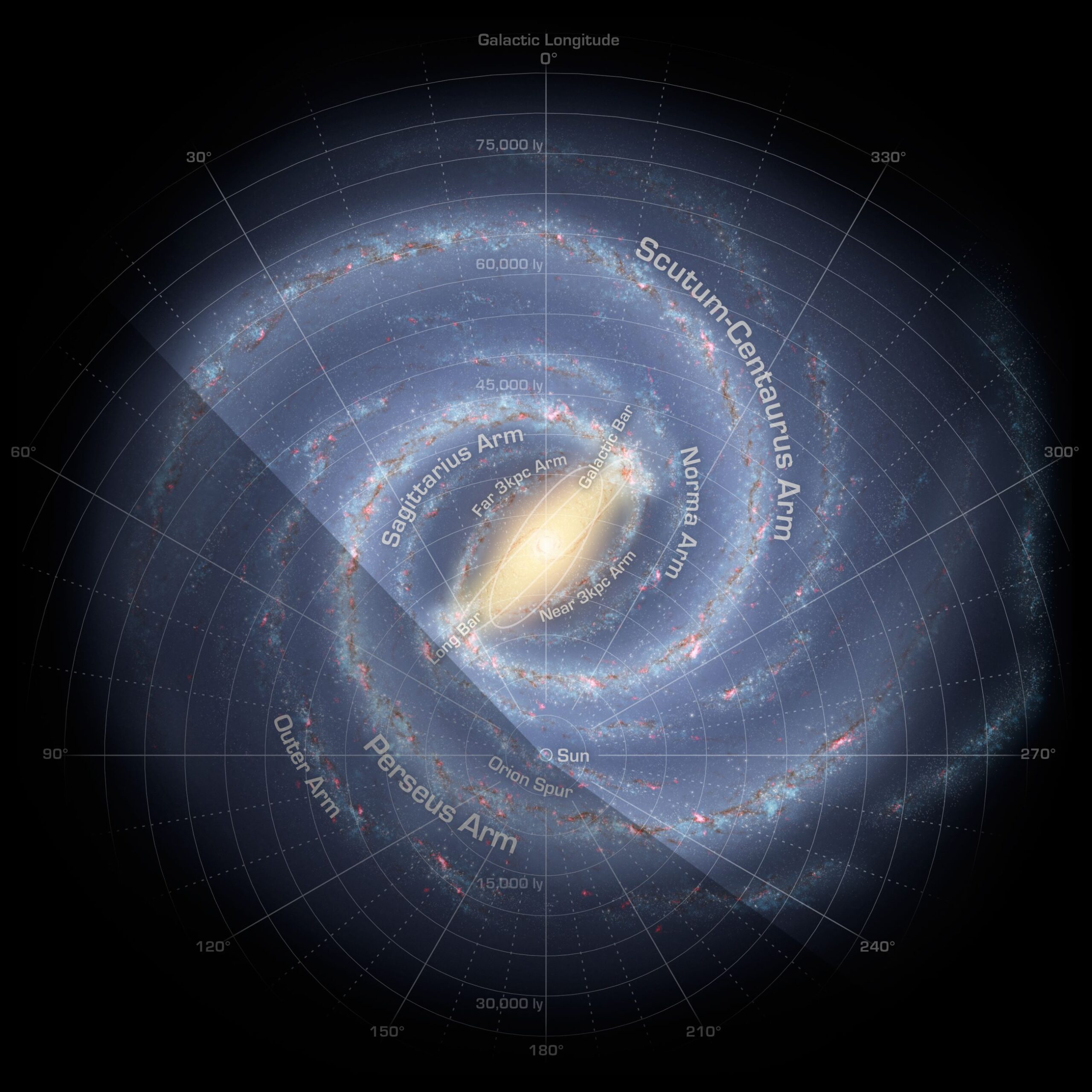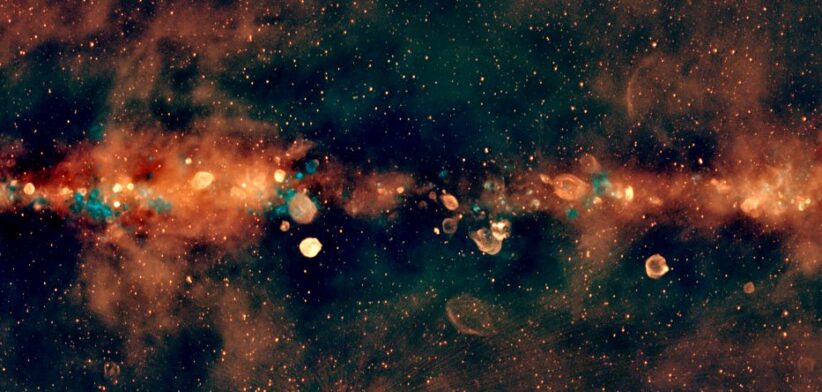A new colourful image of Australia’s view of the Milky Way Galaxy has been created using radio waves.
Silvia Mantovanini, a PhD student at the Curtin University node of The International Centre for Radio Astronomy Research in Western Australia, spent 18 months constructing the Southern Hemisphere perspective of our celestial home, revealing it across a wide range of radio wavelengths.
Mr Mantovanini created the image using supercomputers to process and compile the data from two extensive WA-based surveys, providing astronomers with new ways to explore the birth, evolution, and death of stars in our Galaxy.
“This vibrant image delivers an unparalleled perspective of our Galaxy at low radio frequencies,” he said.
“It provides valuable insights into the evolution of stars, including their formation in various regions of the Galaxy, how they interact with other celestial objects, and ultimately their demise.”
Mr Mantovanini said the two surveys were conducted over 28 nights in 2013 and 2014, and 113 nights from 2018 to 2020.
He said the new image offered twice the resolution, 10 times the sensitivity, and covered twice the area compared to the previous image released in 2019.
“This significant improvement in resolution, sensitivity and sky coverage allows for a more detailed and comprehensive study of the Milky Way.”
Mr Mantovanini said his research focused on supernova remnants, the expanding clouds of gas and energy left behind when a star explodes at the end of its life.
He said although hundreds of these remnants have been discovered so far, astronomers suspected that thousands more were waiting to be found, with this image allowing them to distinguish between the gas surrounding new stars and that left behind by dead ones, revealing clearer patterns in the cosmic landscape.
“You can clearly identify remnants of exploded stars, represented by large red circles. The smaller blue regions indicate stellar nurseries where new stars are actively forming.”
Learn more in the study: GaLactic and extragalactic all-sky Murchison Widefield Array survey eXtended (GLEAM-X) III: Galactic plane









